29:25
I have a couple of Kootenay stories. I think we had just switched over to the Wardens and the resource management people division. it was a Friday of a long weekend which meant crazy highway traffic coming down the Sinclair summit into the Columbia Valley. We got a report at the Warden Office which was a few kilometers above the hot pools of an injured moose just up from our office. I took a firearm and whoever was around, I think it was Sheila Wrazej (wildlife tech), Alan Dibb (biologist), and there was a GIS person and Alex Taylor was around. We would need all hands on deck just to manage traffic and public. Now they’re backed up for kilometers, close enough to where people can see this moose and it’s a huge bull with a big rack and a dangling leg standing in the creek just below the highway embankment. He has the big shocky eyes and the ‘help me’ look. There’s all kinds of people trying to see what’s going on while the team tried to keep them back. I had the shotgun and dropped the moose in the creek. There was so much blood that the creek was running red. Alan Dibb stops and says quite seriously, “Do you think it’ll run red all the way down to the hot springs?” and that stunned everyone into silence. I ran back and got waders and we winched and wrestled this massive moose up the steep, rocky bank with his antlers getting caught every which way. Alex was videoing at the time as he often did, and it became a piece of Leanne Allison’s film on wildlife highway crossings which subsequently showed in the Banff Mountain Film Festival, not too long after that, we moved to Smithers and then went to see the traveling festival films when all of a sudden there’s me loading up this moose. And I could hear all these voices in the theater going, “Hey, there’s Jo” I hadn’t even been there very long, but I knew lots of people already.
I have another Kootenay story that is kind of intriguing because it relates a bit to First Nations lore. I walked up the Kindersley- Sinclair trail one fall to do a boundary patrol. You look down into sheep and goat country from the little pass up there. So, I was sitting up there and glassing around and just off to my side in a big open area was a grizzly sow with two young-of-year cubs. I could keep an eye on them and just kept hoping that they didn’t drop down into the valley where I had to go back out. Then this little pygmy owl landed beside me and it was starting to make me edgy because I know in First Nations lore that it is a sign of death. I had been told that by a couple of young First Nations people that I worked with in Banff and seemingly applied to different First Nations across the country. Furthermore, I had read the book, I Heard the Owl Call My Name set in a remote BC coastal village. I was becoming really more anxious as I would swing my hiking pole at it and it would just flutter a bit and land again right beside me, move a bit and land beside me again. I was starting to think I’m gonna die from these bears or something else is going to happen. It was really rattling me and finally the bears were out of sight and I had to start back, hoping I would not meet them on the trail out. I hiked out without incident and had barely walked into the office and Gloria came up to me and told me that my friend and an ex-Chief Park Warden just called to give me the message that a dear comrade’s son had just been killed in a crash. It was a stunning coincidence, and I still don’t like birds landing around me, especially not owls.
There was an ice climbing accident in Yoho and it was Sandra Martindale’s husband who was that was involved. Sandra was a Banff Dispatcher who of course we all knew at the time. I was sitting having Christmas drinks, in late December in Field with Sandra and Graham Pole, maybe another. Sandra’s husband and his friend were out ice climbing. She was waiting for them, it was getting dark and it was left unsaid but we were all kind of squirming; each wondering: Where are these guys? But nobody said anything. I walked home to the other end of town in full on dark, just got in the door and Gord Rutherford (Chief Park Warden) called and said, “Get your gear, there’s been an ice climbing accident.”. The climbers got taken out by an avalanche and were buried but the one guy dug himself out, tried looking for his partner and couldn’t find him so he scooted down to the bottom of the slide path on his butt because he was fairly injured. At the side of the (railroad) tracks the crew in a downhill train spotted him in the dark. They sent a snow machine up, picked him up and that’s how the word then got to Gord from CP Rail. A team of Wardens came over from Lake Louise to help I think just 3 of us in Yoho. We were staging at the bottom of the Kicking Horse Hill, at the rail crossing in town. Emotions were high because everyone knew Sandra. The first snowmobile to come over was yanked off the tailgate resulting in a broken ski rendering it useless. I remember wondering if we would be out there in the dark and avalanche hazard if it weren’t for our friend and dispatcher who was also on site and wanting to help.
Rescuers were shuttled up the tracks and we hiked up the slide path with a lot of mountain above us. We organized to probe the debris. There could have been 8-10 of us probing in the dark by headlamp when there was a different sound that not everybody heard right away, and somebody says, What’s that? And somebody yelled “Avalanche!” Gord Peyto who had just arrived with the dog simultaneously yells “Jesus Christ, it’s an avalanche!” We’re all in a gully with steep moraine-like sides and scrambling like hell to get up and out of it. I remember being on the lip of it, turning and seeing Gordon Rutherford teetering on the top and losing his balance like he was going to fall backwards, back into the channel. I grabbed his jacket with one hand and just yanked him flying over the top. It was adrenaline that gave me a super strength. Gord said: Thank you. Thank you. Then we all just kind of held our breath as we got dusted. Somebody did the headcount and everybody ok, so we continued probing not knowing what kind of hang fire was still above on Mt. Stephen in the dark, luckily the dog shortly after found the target just ahead of the probe line.
MH: How did the Warden service change over the years? – hired during centralization, affirmative action, focus on public safety, changes in the 1990/2000’s, ecological integrity, etc.? 42:39
JW: There were some ups and downs for sure but no matter how it changed, or what we went through, I always felt lucky, like I had one of the best jobs in the whole country. When I first started with the Warden Service, there was 1000s of people applying for the job in Western Canada. I did manage to get on full time sooner than later placing in a top 10. There weren’t too many women who were full time at the time, but there were lots of female seasonal and terms Wardens.
I have memories of the big changes through that whole firearms thing and safety grievance. I was in a law enforcement defensive tactics course in Banff and Doug Martin, a major player behind the push to arm Wardens was in that course. I have a photo as a memory from that training in which I am holding my baby and my arms are black and blue, partly because I refused to say “Uncle” to an over exuberant participant! A high level decision came down in the second or third day of that course shutting us down in law enforcement across the country. We were all stunned. Doug took it very emotionally.
I also participated in the last long arms firearms training course at Chilliwack. Management had thought sidearms would be a bad look on Park Wardens and someone actually thought maybe long arms would be better. We trained on human silhouettes with rifles and shotguns. I had visions of walking into a campground with a long barrel something or other. Crazy. That training was cancelled right after my troop.
When it came down to personally deciding whether to carry a sidearm or not, I was 50 at the time and I thought no way do I want to carry a gun at this point. So, I went to the ‘other side’, which was still great and fun, and still one of the best jobs in the country. It was a sad time, there were a lot of wardens who were really unhappy, sometimes hard to work with and I felt so bad. I thought if they could just hang in there until they’re retired. It was a big change and some folks were not able to adjust well to it. It was a tough time, a lot of history gone. When we changed uniforms all I could think of was red and green. I was not proud of my new uniform and I was pretty religious at wearing my Stetson whenever on duty out of the office. I don’t know if you can picture that blue spruce, green? My mother used to say red and green should never be worn together. The first day I wore that new uniform my son Ryan was quite young and I was trying to get him out the door and me to work, and I was all stressed out. I had him, plopped on the counter. He goes, “Mom, why aren’t you wearing your hat?” He’s looking at this new uniform and noticed that I wasn’t wearing my Stetson. Well I burst into tears and he burst into tears and we were both crying and I said, “We’re not going anywhere today. We’re staying home.” It was too much.
While still in Banff, I had the pleasure of supervising frontcountry Operations for a while. There hadn’t been a female Supervisor before. Again, it was Dave Norcross who encouraged me to take the job. We had such a great team with the likes of Glen Peers, Don Waters, Scott Ward, Blair Fyten, Bill Hunt, Karen Lassen, Julie Timmins, Elaine O’Neill, I can’t remember if I’ve missed anyone, but what a great team, and we made a few changes and tried to change things up like looking at schedules and night shifts and things like that. We had weekly training sessions and it was all good, at least from my perspective. Haha.
MH: What about the Warden Service was important to you? – idea of protecting and preserving national parks, keeping people safe, etc.?
JW: The protection and preservation mandate piece, and the Warden Service itself. The teamwork was important. You knew people always had your back, no matter what the scenario and Wardens were just such capable individuals.
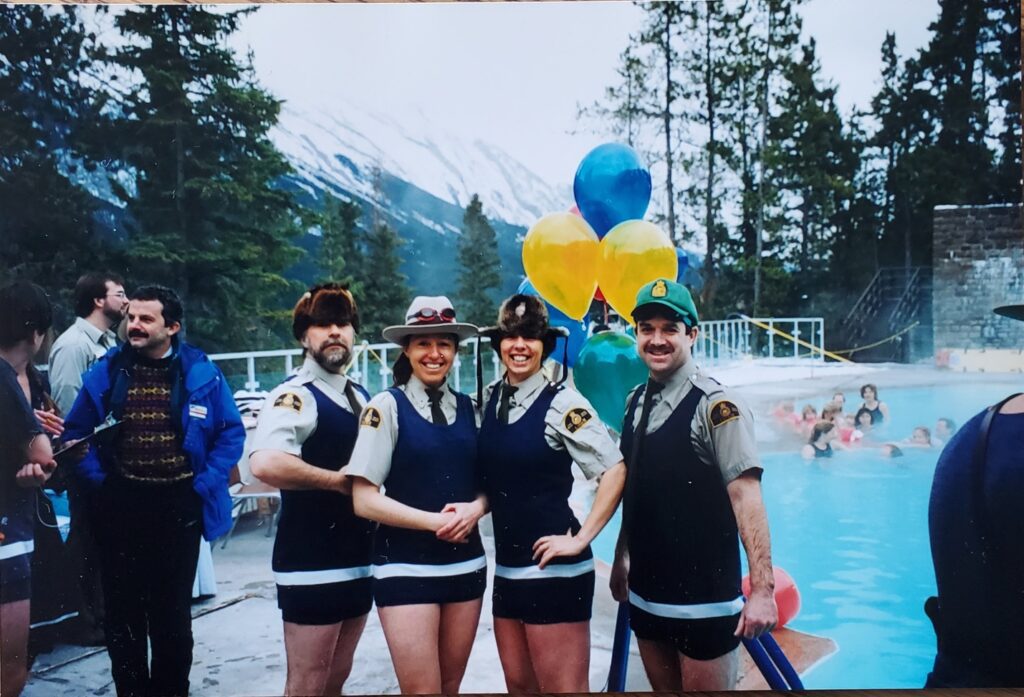
Goofing Off Wardens in Historical Hot Springs Swimsuits
I just loved talking to visitors out on trails or parking lots. In the capacity as a warden, we commanded a certain respect and authority, particularly if you were wearing the Stetson, the duty vest and duty belt, but you still had to verbalize and behave appropriately. In my years of work in both Kananaskis Country and Parks I worked only with a few people who were perhaps overly officious at times and I have to say things could elevate quickly to a frightening situation.
MH: Are there any legends or stories associated with the Warden Service that you can share? Is there anyone from the Service that stand out in your mind? 5213
JW: I feel lucky to have met some of the old timers when I started in visitor services- guys like Ollie Hermanrude and Hans Fuhrer. One of the projects I had was to interview a bunch of guys including Jimmy Syme and some of the guys that had been around a while in Jasper. I have to give credit to people like Peter Whyte, for encouraging me at the very start when I went off to Kananaskis to ranger and he was always so supportive. I had so many great bosses and supervisors who were always encouraging and never treated me differently from the ‘other guys’.
MH: Is there anything about the Warden Service as you knew it that you would want future generations of Wardens to know? 5504
JW: I don’t know what to say to that. They should read the history and the stories and be proud of it. I don’t know a lot about what they do or how much they can get on trails and that but I just would hope that they can be satisfied in their role.
MH: What made the Warden Service such a unique organization?
JW: Well I guess I maybe kind of touched on that with the teamwork and having each other’s backs, but you know it wasn’t just a job, especially in smaller parks. It was a lifestyle; it was family in some of those smaller parks. I guess the multi-faceted aspects to it when we used to do all three disciplines, Resource Management, Public Safety and Law Enforcement that certainly made it unique in the country.
MH: Do you have any lasting memories as a Warden? Favourite, park, cabin, horse, trail, etc.?
JW: 57:11 Lots and lots. I always loved the Rockwall Trail which I knew like the back of my hand for a time. I haven’t been for a number of years but I understand it’s kind of falling apart, infrastructure and trail maintenance. When my son Ryan was young, we took him into lots of cabins. I always loved going up to Takkakaw Falls, and that worked fantastic when he was little. I remember he wasn’t really walking yet and I set him on the porch and turned around to get something and off he went walking into the cabin. We had to build a fence around the woodstove because he was drawn to the fire.
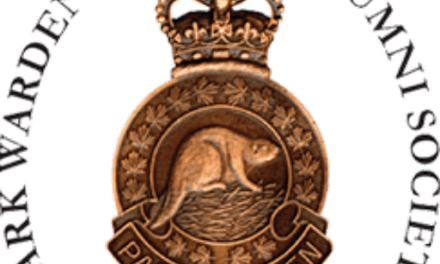
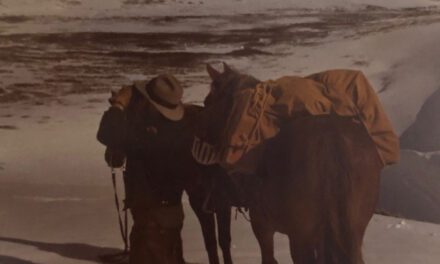
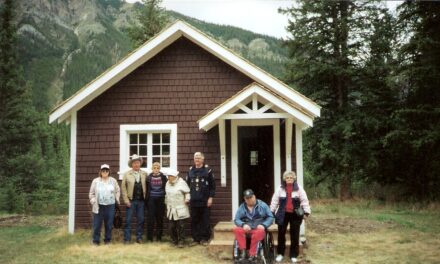
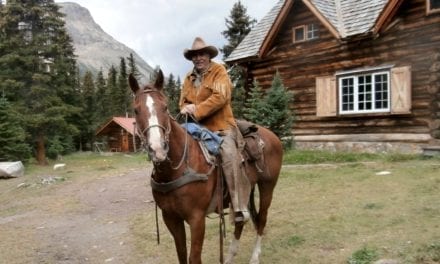
What an excellent interview.
Jo had an exciting and fascinating career!
Always with a sunny and positive attitude.